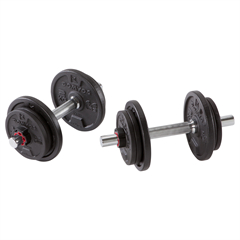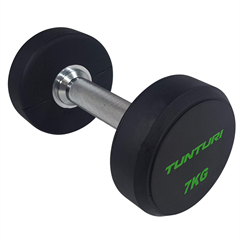Kettlebells are versatile pieces of fitness equipment that can be used for strength training, cardio workouts, and overall functional fitness. If you’re a beginner looking to get started with kettlebell training, here are some basics to help you get going safely and effectively:
- Choose the Right Kettlebell:
- Start with a light to moderate weight kettlebell, usually between 8-20 kilograms (18-44 pounds) for most beginners.
- The weight you choose should allow you to perform exercises with proper form and control.
- Warm Up:
- Always begin with a proper warm-up to prepare your body for the workout. Include dynamic stretches and light cardio exercises like jumping jacks or jogging in place.
- Learn Proper Form:
- Proper form is crucial for kettlebell exercises to prevent injury and maximize effectiveness.
- Consider working with a certified kettlebell instructor, at least initially, to learn proper technique.
- Basic Kettlebell Exercises: Here are some fundamental kettlebell exercises for beginners:
- Kettlebell Swing: This is a foundational exercise. Start with the two-handed swing to get the basic movement down, then progress to the one-handed swing.
- Goblet Squat: Hold the kettlebell close to your chest and perform squats. This exercise helps build leg and core strength.
- Turkish Get-Up: This complex movement improves overall stability and strength. It’s important to learn the steps properly.
- Kettlebell Deadlift: Similar to a traditional deadlift, this exercise targets your hamstrings, glutes, and lower back.
- Start with Light Weights:
- Begin with a light kettlebell to learn the movements and gradually increase the weight as you get more comfortable and stronger.
- Focus on Breathing:
- Maintain steady breathing throughout your exercises. Inhale during the easier phase of the movement and exhale during the effort phase.
- Pay Attention to Safety:
- Always keep a safe distance from others while swinging a kettlebell.
- Maintain control at all times to prevent injuries.
- Be cautious when setting the kettlebell down to avoid injury.
- Create a Routine:
- Establish a regular workout routine that incorporates kettlebell exercises. Aim for at least 2-3 sessions per week.
- Rest and Recovery:
- Give your body time to recover between kettlebell sessions to prevent overtraining and injury.
- Progress Gradually:
- As you become more experienced and comfortable with kettlebell training, gradually increase the weight and intensity of your workouts.
- Listen to Your Body:
- Pay attention to any discomfort or pain. If something doesn’t feel right, stop the exercise and seek guidance if needed.
- Cool Down and Stretch:
- After your workout, cool down with static stretches to improve flexibility and reduce muscle soreness.
Remember that safety and proper technique are paramount in kettlebell training. If you’re unsure about your form or how to progress, consider working with a certified kettlebell instructor who can provide guidance and corrections. Start slowly, be patient with yourself, and enjoy the benefits of this effective and versatile form of exercise.


















